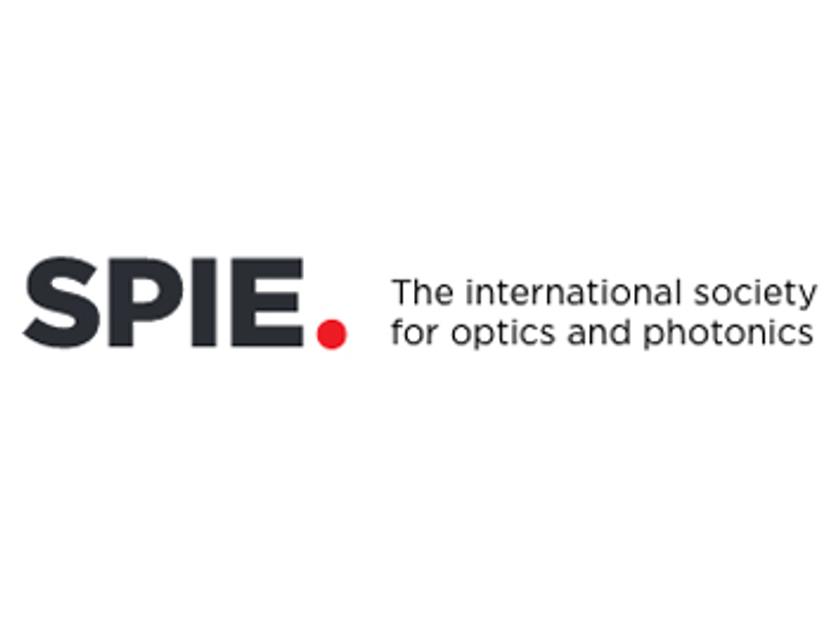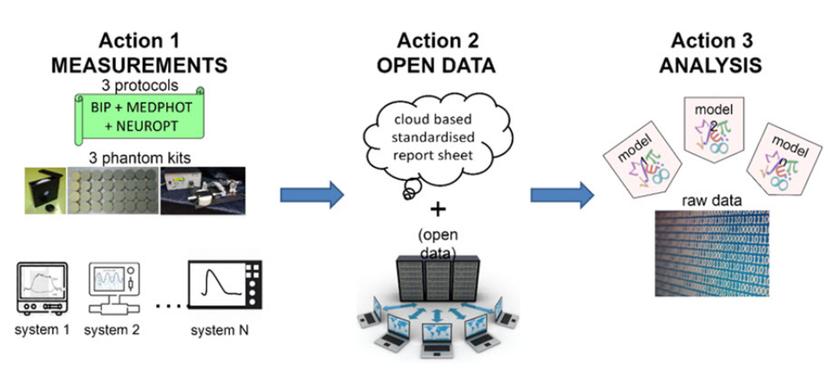Diffuse optics for medical diagnostics: Progress toward standardization
New initiative aims to incentivize the use of standard protocols for assessing and comparing diffuse optics systems in medical diagnosis
21 Jul 2022
Among the various optics-based tools used in diagnostics, diffuse optics (DO) is rapidly emerging as an attractive technology. The technique is based on analyzing how light is absorbed and scattered by biological tissues, which relates to the tissue's chemical composition and structure. One of the key advantages of DO is that it is non-invasive (through the use of low-power near-infrared light). Moreover, it can be used to probe tissues at depths of up to a few centimeters and can even detect functional activation and oxygenation of the brain or muscles. DO is therefore likely to assume a central role in the diagnosis and monitoring of patients both at the hospital and at home. However, even when using the same DO principles to study or diagnose a given disease, clinics, and laboratories around the world, use vastly different platforms and techniques. This poses a challenge when trying to assess their performance, which is necessary to identify malfunctioning equipment, benchmark developments in DO technology, establish common ground for comparing techniques and instruments, and allow reliable reuse and interpretation of generated open data.
Fortunately, a collaboration between 12 European institutions—in the framework of the European Union's Horizon 2020 Marie Skłodowska-Curie Innovative Training Network “BitMap,” led by Hamid Dehghani, University of Birmingham—is making great strides towards realizing performance assessment and standardization (PAS) in the field of DO. Leveraging over two decades of joint research efforts, the initiative is centered around three protocols previously developed for assessing the performance of DO instruments. This initiative envisions three main actions: Action 1 involves the collection of experimental data, Action 2 focuses on making this data available as open data, and Action 3 revolves around a common analysis of the data using the same tools and techniques.

A study published in the Journal of Biomedical Optics (JBO) presents the results obtained in the context of Action 1. The BitMap exercise presented in this paper is the largest multi-laboratory comparison of DO instruments, encompassing 12 institutions and 28 systems. Through this comparison, the study aims to enforce the culture of PAS in the DO community and beyond, and propose a common methodology that can be adopted in other environments. An interesting outcome of this particular work is the conception of simple numeric values, called synthetic indicators, for each of the tests employed. These indicators allow for easy comparison across the range of instruments enrolled.
Comparing the performance of different DO instruments is tricky. The researchers settled on three internationally adopted protocols (BIP, MEDPHOT, and NEUROPT) to challenge each DO system. The BIP protocol served to characterize the most basic optical performances of each instrument, whereas the MEDPHOT protocol characterized how well each instrument could recover homogeneous optical properties, i.e., absorption and reduced scattering coefficients. Finally, the NEUROPT protocol tested how well each system could detect inhomogeneities in a sample by focusing on measures related to contrast. Additionally, the researchers agreed on three different phantom kits, each of which was specially tailored for one of the protocols (a “phantom” refers to an artificial structure, typically used for calibration and testing, that emulates certain properties of human tissue).
The experiments involved carrying out an assortment of relevant tests from each protocol on its respective phantom kit, using each of the DO instruments. The researchers then compared the results obtained from these experiments to understand which instruments and techniques showed the best performance, how reproducible the results were, and how much variability there was between measurements made using different systems. They found a substantial difference in hardware performances across different systems, which helped them identify some critical issues related to performance assessment in DO.
The researchers plan to deploy the entire dataset gathered through Action 1 into an open data repository (Action 2). This would help them and others to analyze and compare specific aspects of the DO systems (Action 3). One of the ultimate objectives of the project is to identify and mitigate uncertainties and measurement artifacts for each instrument and analysis method, thereby unlocking their full potential.
“Great advances in physics derived from precise measurements of specific physical quantities-planet orbits, speed of light, particle masses, etc. Photon migration through the human body is complicated by the biological variability, but not the basic physics underlying it all,” says senior author Antonio Pifferi, Politecnico di Milano, Italy. “We can disentangle the uncertainties and artifacts produced by the instruments and analysis tools from the biological variability, with great benefit for clinical use.”
These efforts could open doors to a powerful and reliable DO technology, potentially enabling more accurate and convenient diagnostics.
